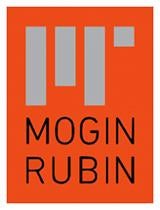In 2001, Time Magazine editor Michael Elliott asked legendary General Electric CEO Jack Welch to reflect on the termination of his dream acquisition of Honeywell International, not at the hands of U.S. antitrust agencies but by the European Commission. If consummated, the $45 billion deal would have been an enormous feather in Welch’s already well-feathered cap. Instead, it marked the first time a European competition agency would spoil a merger between two U.S. firms. “Should a European be able to shape a merger between two American companies?” Elliott asked. “That’s the law,” replied Welch. “That really is just the way the world works.” “We’d all better get used to it,” Elliott wrote, because “soon, something like it will happen again.”
Elliott’s prediction was correct in 2001 and has become increasingly correct in the years since. Not only have capable antitrust enforcers emerged in jurisdictions throughout the world, but the U.S. has also relaxed its own enforcement standards. As a result, the U.S. no longer calls the shots when its multinationals want to merge. The failure of three recent deals – McGraw-Hill Education/Cengage Learning, Illumina Inc./Pacific Biosciences of California Inc., and Sabre Corp./Farelogix Inc. – illustrate this new world order, particularly as it relates to the U.K. Competition and Markets Authority.
U.K. CMA Offers Most Resistance to McGraw-Hill and Cengage Merger
McGraw-Hill and Cengage, two leading multinational textbook publishers, announced their intention to merge in May 2019. The merger would have combined the second and third largest college textbook publishers, creating a duopoly with Pearson Plc that would have controlled more than 80% of the market. The merger threatened to create duopolies in related and emerging markets, including those for student learning data and all-inclusive textbook access fees. The merger also endangered pro-consumer markets like the used textbooks market.
Of the numerous agencies reviewing the merger, the CMA offered the greatest opposition. After conducting a Phase I investigation, the CMA gave the parties an ultimatum – provide remedies to the competition problems caused by the merger or face a Phase II investigation. The parties submitted remedies, but they were rejected because they “did not represent important enough constraints on educational publishers to offset the CMA’s concerns about the loss of competition arising from the merger.”
The U.S. Department of Justice, on the other hand, was reportedly in line to approve the merger with relatively minor divestitures. This decision was made despite detailed submissions by influential watchdog groups and student associations that outlined several of the competition problems caused by the merger.
Even U.S. lawmakers, who often fail to grasp nuanced antitrust issues, correctly pegged several of the competition problems associated with the merger. In a strongly worded letter to the DOJ, Rep. David N. Cicilline of Rhode Island, Chairman of the House Antitrust Subcommittee, and Rep. Jan Schakowsky of Illinois, Chairman of the House Consumer and Commerce Subcommittee, asked for increased scrutiny for the deal, citing its potential effects on textbook prices and student data, its impact on pro-consumer markets like that for used books, and its influence over whether the industry shifts to an inclusive access fee model, which “will completely remove students’ ability to price-shop and will prevent students from reselling textbooks.”
CMA Takes the Lead for Illumina and PacBio Merger
Illumina, which dominates short-read DNA sequencing, announced in late 2018 that it would acquire PacBio, which dominates emerging long-read DNA sequencing. The central issue for the reviewing agencies was whether the companies are competitors even though short- and long-read sequencing were traditionally viewed as poor substitutes.
The CMA took the reigns on this analysis. In October 2019, the CMA determined the companies were competitors in a dynamic market and, therefore, the merger must be analyzed in a dynamic context. The CMA based this decision largely on non-price factors, including that merging parties (i) compete through innovation, (ii) are particularly concerned with each other’s innovations, and (iii) share a desire to be the preferred sequencer for as many projects as possible, including projects aimed at potential customers not currently in the market.
The CMA ultimately concluded the deal would reduce competition, potentially increase prices, lead to deterioration in quality and/or service, and harm innovation. The CMA also indicated that its preferred resolution was to block the deal altogether than to regulate the parties’ behavior or require some divestiture. For example, the CMA concluded a partial divesture by PacBio would not work because “the degree of operational overlap between functions in each business, the complete integration of sequencing systems within the businesses, and the fact that R&D and innovation-related activity is a centralized process which affects each company’s global offering.”
Only months later, in December 2019, did the FTC challenge the transaction as an unlawful attempt by Illumina to maintain its monopoly. The FTC largely followed the CMA’s lead, concluding the companies operated in the same market and the merger was an unlawful attempt by Illumina to maintain its monopoly power.
In January 2020, the parties terminated the merger. In announcing this decision, the companies cited a lengthy approval process and “continued uncertainty” caused by the reviewing agencies.
CMA Blocks Sabre/Farelogix Merger Despite U.S. Approval
Following an eight-day bench trial, a U.S. federal court greenlit airline booking services company Sabre Corp.’s acquisition of competitor and market disruptor Farelogix Inc., despite arguments by the DOJ that the deal would “extinguish crucial constraint on Sabre’s market power,” resulting in higher prices and less competition.
Although Sabre handles 50 percent of airline bookings made through U.S. travel agents and only a couple of other players occupy the market, U.S. Judge Leonard P. Stark ruled on April 7, 2020 that the DOJ hadn’t met its burden of proof and declined to enjoin the acquisition (United States v. Sabre Corp., No. 19-1548-LPS, 2020 U.S. Dist. LEXIS 64637 (D. Del. Apr. 7, 2020)).
Judge Stark’s decision seemed compelled by procedural and technical formalities, despite significant evidence that the acquisition was likely to harm competition. For example, he wrote that Farelogix “has historically been an innovator while Sabre has resisted change.” One airline executive testified, Farelogix “keeps GDS [global distribution systems] on their toes relative to innovating to keep up.” Sabre itself said in SEC filings that airlines with “direct connect initiatives” – like those offered by Farelogix – can weaken Sabre’s position when negotiating prices. Another airline executive described Farelogix’s direct connect technology as a “low cost substitute” for global distribution systems, like Sabre’s.
The judge acknowledged that allowing the deal may not seem in line with many of his findings “[o]n several points that received a great deal of attention at trial — whether Farelogix is a valuable company enjoying relative success in the market, whether Sabre and Farelogix compete, whether Sabre understands GDS bypass is a threat, whether Sabre stands to lose revenue even from the expansion of GDS passthrough, and Sabre’s motivation for its proposed acquisition of Farelogix ….” On these issues the Court was more persuaded by the DOJ than by the merging parties “largely due to the surprising lack of credibility … of certain defense witnesses,” referring by name to the Sabre and Farelogix CEOs and the Sabre deal leader.
Despite this evidence, Judge Stark held “Defendants have won this case. This is because the burden of proof was on DOJ, not Defendants. Defendants opted to tell the Court a story that is not adequately supported by the facts, but it was their choice whether to do so, and their failing does not determine the outcome of this case. Instead, it is DOJ which, under the law, has the obligation to prove its contention that the Sabre-Farelogix transaction will harm competition in a relevant product and geographic market. DOJ failed.” The judge said the government based its argument on a “simply unpersuasive” expert analysis. “Unlike Defendants’ evidentiary failings, DOJ’s are dispositive.”
The government selectively and “without persuasive explanation” dissected Sabre’s services into a category of “booking services,” leaving out the other services it provides to travel agencies, so the DOJ failed, according to the judge, to identify a relevant product market. This “does not accurately correspond to what actually is transacted in the market relevant to the proposed transaction,” Judge Stark found. Because Sabre operated a transaction platform for airline tickets between travel agents on one side and airlines on the other, the judge felt bound by the holding in Ohio v. American Express to require the DOJ to allege and prove harm to competition in a two-sided market. Because Sabre operated only on one side, providing services to airlines for both ticket sales as well as other transaction features not available on Sabre, the judge found it implausible that a firm like Sabre, which operates a two-sided transaction platform, would be competing in the same market.
As a result, the DOJ had failed in the court’s view to demonstrate harm to competition, prove new barriers to entry, establish the likelihood of increased prices, show that the deal would stifle innovation, or even identify a relevant geographic market.
A few days later, the CMA blocked the deal. Acknowledging that CMA’s decision comes at a challenging time for the travel industry due to the COVID-19 pandemic, CMA Chairman Martin Coleman nonetheless said, “It remains important that we protect competition among businesses that provide services to airlines and the benefits such competition can bring for airlines and passengers. We never take decisions to block mergers lightly and in this case the evidence of harm is clear.” Although we have no way of knowing, but the U.K.’s CMA would seem to agree with Judge Stark’s own comment that his ultimate decision “may strike some, including the litigants, as somewhat odd,” given his several findings that militated against the companies and their deal and in favor of the U.S. government’s case to block it.
Leadership Goes to Jurisdictions with Most Restrictive Policies
Unlike other forms of international cooperation grounded in notions of comity and geopolitical realities, leadership in international merger clearance defaults to the jurisdiction with the most restrictive policy. For decades, the U.S. served in this role; merger clearance by the FTC or DOJ would practically ensure worldwide approval. But the E.C.’s decision to block the GE-Honeywell acquisition marked something of an inflection point in the path of global enforcement.
The actions by the DOJ and CMA regarding the Cengage/McGraw-Hill merger exemplify the simultaneous weakening in the U.S. and strengthening in Europe of substantive merger clearance standards and demands. The CMA applied the more restrictive standard and therefore led the clearance process. The CMA not only required the parties to propose remedies to the competition problems it identified, but then rejected those remedies as insufficient. Cengage and McGraw-Hill called off the merger roughly one month later, strongly implying the CMA’s rejection played a key role in stopping the deal. The DOJ, on the other hand, was reportedly poised to approve the merger with relatively minor divestitures, largely ignoring competition concerns raised by lawmakers and advocacy groups.
The CMA again took the lead in the Illumina/PacBio merger review. The CMA was first to conclude Illumina and PacBio operated in a single dynamic market and that the merger was an attempt by Illumina to eliminate a nascent competitor. The CMA also indicated it would attempt to block the merger, as it did not see an alternative that would protect competition from a patent-protected monopolist in a market for an extremely important technology. Although the DOJ eventually reached similar conclusions and challenged the merger, it was not until months after the CMA.
But global divergence in substantive standards and expedience is only half the story, as the Sabre/Farelogix debacle demonstrates that jurisdictions have differing procedural requirements as well. In that case the U.S. government challenged a significant consolidation in a complex, high-tech sub-market in the airline industry only to be confronted with seemingly insurmountable procedural hurdles. Judge Stark’s mechanical and misguided interpretation of the Supreme Court’s holding in Amex—that the competitive effects in any antitrust case involving a transaction platform must be analyzed within a two-sided market definition—created an impossible legal hurdle for the government since only two-sided transaction platforms could compete against Sabre, a qualification Farelogix did not meet.
Putting aside the wrong-headedness of the court’s interpretation of Amex (examples abound of anticompetitive conduct by a two-sided transaction platform that does not require defining a two-sided market), the greater sin may have been to elevate formalism over substance. It is well known that substantive rights can be rolled back through purely procedural maneuvers. In the Sabre-Farelogix case, the court created an excessively inflexible market definition requirement and reached a conclusion seemingly at odds with the evidence largely because the government failed to offer a prima facie case. In other words, the merging parties needn’t have bothered presenting their unreliable and misleading evidence. The court ruled the DOJ failed to make out its case in chief, so all the merging parties had to do was show up.
By contrast, the CMA satisfied its market definition and elemental requirements through overwhelming evidence that demonstrated Farelogix represented the most likely source of industry innovation and, as such, the most significant competitive constraint on Sabre’s market leadership. The U.S. court was aware of this, having noted that Farelogix represents the only real threat to Sabre and the testimony of one airline executive who said it would cost $40 million for an airline to develop its own platform and more than $20 million a year to maintain. An innovator like Farelogix could be easily and/or intentionally stymied if controlled by Sabre, a proposition that seemed self-evident to the CMA but was swallowed whole by the procedural obstacles erected by the U.S. court.
Indeed, the U.S.-European procedural divergence in merger control is institutional. U.S. authorities must prove a case in court to obtain an injunction whereas agencies like the E.C. can impose injunctions without judicial intervention, placing the onus on the merging parties to challenge the injunction in court. One can have no quarrel with the U.S. system and a deep suspicion of the European approach, but the U.S. institutional structure should not be used as an instrument to roll back substantive antitrust law, as the court did in the Sabre-Farelogix case.
In terms of both substantive competition law standards and the procedural requirements for merger control, the U.S and Europe appear headed in opposite directions. And, based on the three deals discussed above, the adjustment necessary to realign the world’s competition merger policies should be made in Washington – not in London or Brussels.
Edited by Tom Hagy for MoginRubin LLP.





 />i
/>i

